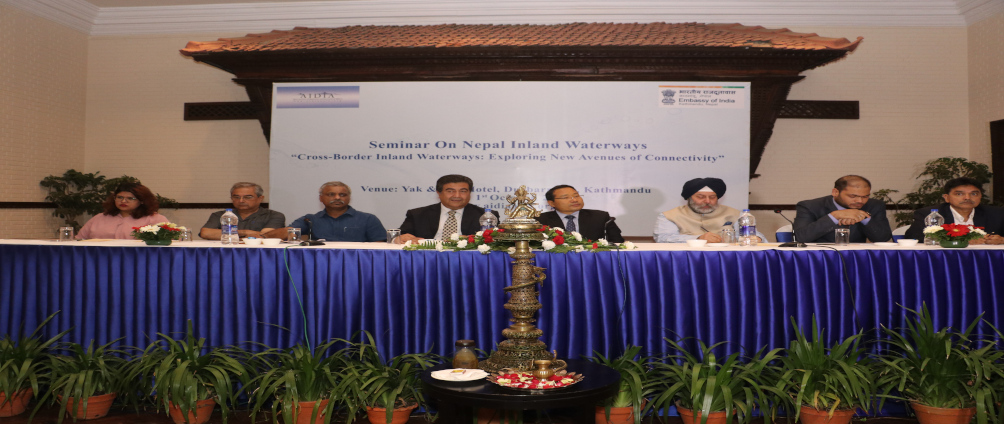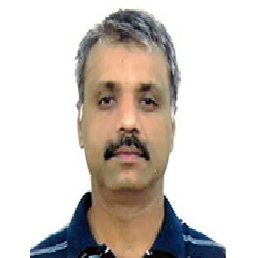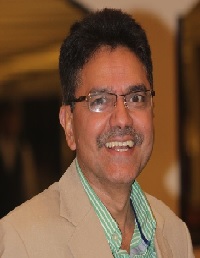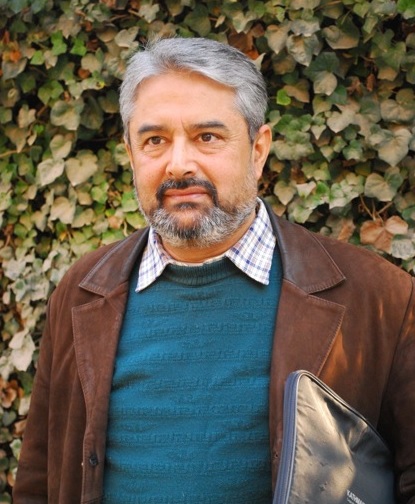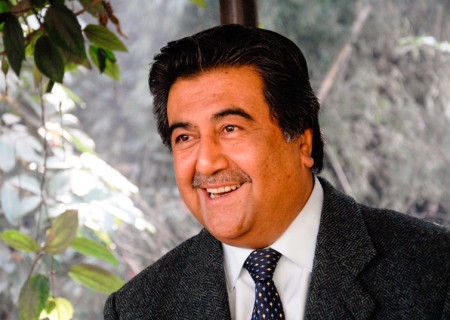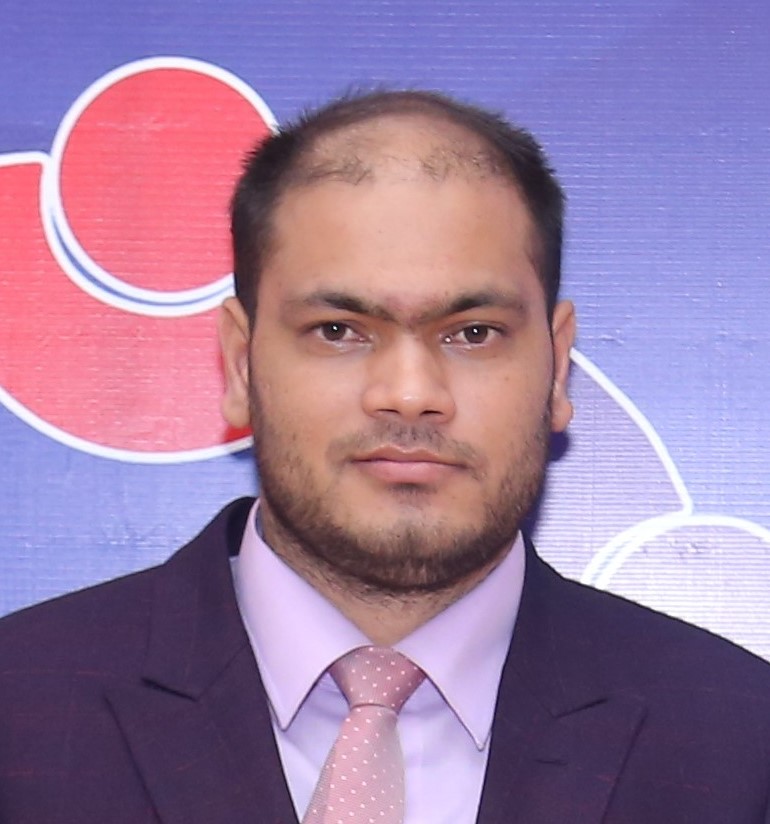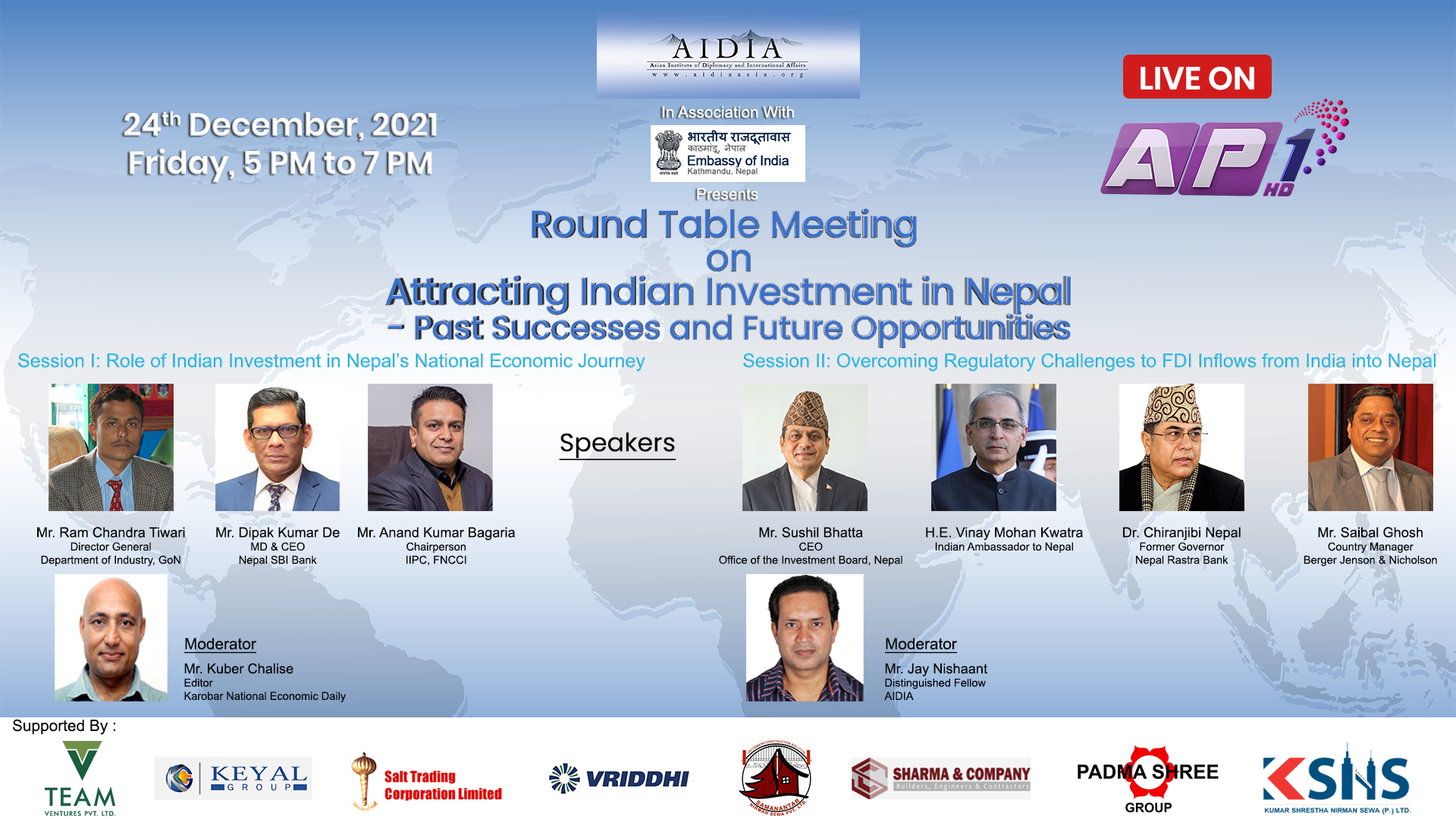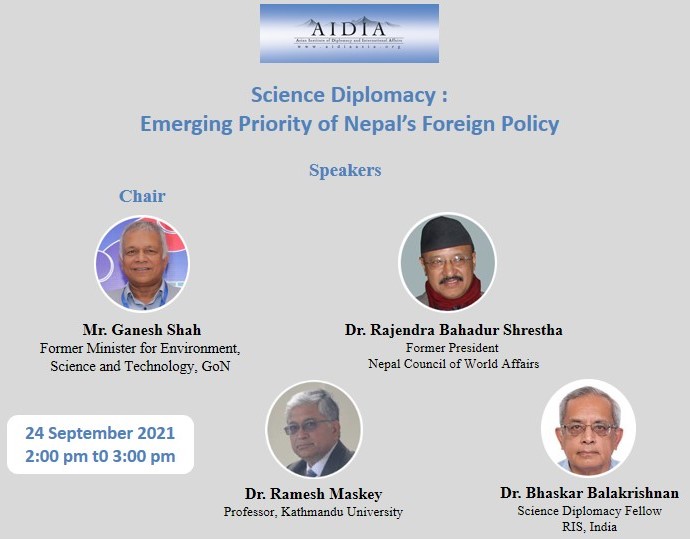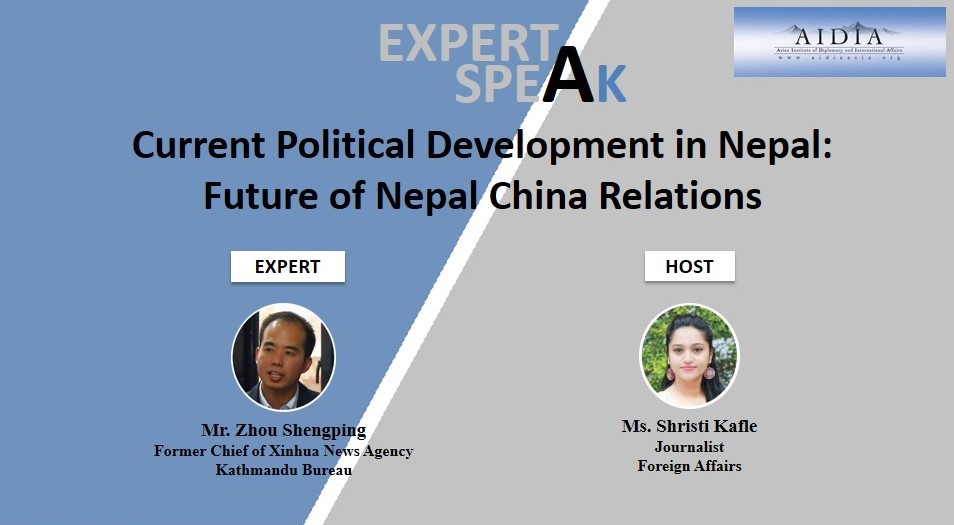The Seminar on Nepal Inland Water Ways was organized jointly by Asian Institute of Diplomacy and International Affairs (AIDIA) and Embassy of India with the theme of ‘Cross-Border Inland Waterways: Exploring New Avenues of Connectivity’ on October 1, 2018 at Hotel Yak and Yeti, Kathmandu. Honorable Barsha Man Pun, Minister of Energy, Water Resources and Irrigation commenced his speech by stating “April 7, 2018 was remarkable day as the Rt. Honorable Prime Ministers of Nepal and India made several decisions on that day. The thing that caught most attention was related to recognize, operationalize and harness the inland water ways potential Nepal shares with India”. He said that this was a landmark decision as it has the potentiality to shape the future of trade, tourism and navigation between Nepal and India.
He said the convergence of Nepal’s rivers to the Ganges provides an opportunity for Nepal by giving it an access to the sea. Apart from being very cheap mode of transportation, inland water transportation is the safest, environmental friendly and most reliable form of transportation, he said. He also said that it would be possible to open market for otherwise non marketable commodities with low transportation cost from Haldia port to other parts of India. He stated that the effort of India to develop national waterways has given excitement and encouraged Nepal to work in development of inland waterways in Nepal. He shared that Nepal would like to extend waterways in three major rivers of Nepal Narayani, Koshi and Karnali which are very important rivers systems not only for Nepal but for India too. The bilateral mechanism between the two countries has already been established to develop the modality of cooperation and carry out the techno economical feasibility for inland waterways connectivity. The bilateral mechanism will suggest the technical, institutional and legal framework that will be required for the inland waterway connectivity and development in Nepal, Minister said.
His Excellency Manjeev Singh Puri, Ambassador of India to Nepal underlined that materialization of cross-border Inland waterways would be a win-win situation for both the countries. He shared that the development of inland waterways in India is one of the priority projects of the government in India. As inland terminal in Varanasi is scheduled to be inaugurated in November, Ambassador stressed the possibility of cargo ship moving to Nepal in those inland container vessels after essential amendments to the Trade and Transit Protocol. He also shared that Nepal and India have a joint team who actually took a concrete steps to have joint scoping mission where in the first instance it’s going to look at the possibilities in India since those inland terminals are coming up at Varanasi, Sahebganj which is in Jharkhand and Kalughat near Patna. Each of these inland terminals have immediate intangible benefits for trade to Nepal. In second instance, and that too will be done soon, land scoping mission on what can be done actually inside the borders of Nepal, he said. The Ambassador stated that the scoping mission will particularly focus on Koshi and Gandak rivers. During the substantial part of the year there is sufficient water in Koshi for inland vessels to come right up to Hanuman Nagar which links to Rajbiraj and East West Highway. And the scoping mission will look at what can be done reserving the Gandak which could bring containerized traffic as close as possible to Bharatpur and Chitwan area, he added.
The Ambassador stated that “making availability of these containerized traffic all the way close to Kathmandu or alternatively Central Nepal and Western Nepal, the large project that we are looking at the development of inland waterways in India the Ganga and the particular lies automatic situation of win for Nepal and win for India and something that the trading community, the business community and others get profit from”.
Mr. Madhav Belbase, Joint Secretary, Water and Energy Commission Secretariat stated that India is developing Inland Waterways in Ganges river National waterway 1 from Haldia to Allahbad which is 1620 kilometer which is one of the largest in a single river in one country and fortunately we have the three rivers continuing the Ganges which is 70% of the total flow in dry season. He stated that he Shebganj multi-modal terminal will come under operation from May 2019 itself. He also shared that technical scoping mission from Nepal to India has already been conducted from 17-21 September 2018 where visit from Varanasi to Kolkata port and Garden reach Jetty was made. On November 2018 and scoping mission from India to Nepal will be held, field visit to Narayani River and Koshi River will be organized, he stated. He suggested to do the necessary amendment in trade and transit treaty with India to accommodate the Inland waterway transportation, conduct techno-economical feasibility of inland waterway in Nepal and to establish organization to look after inland navigation, infrastructures development, develop legal framework, train the people, work together with industries.
Ms. Diksha Singh Research Officer, South Asia Watch on Trade, Economics and Environment (SAWTEE) said despite there are many water resource plant, transportation policies and all these plans and policies have included navigation and water transport one of the viable use of water resources in Nepal but practically there is nothing, there is no binding legislation and there is no institution to look after inland water transportation. Basically the only water transportation available is based in Kaligandaki A hydropower project. She stated that we have possibilities of connecting high seas via Indian waterways and Bangladeshi waterways if we signed some protocol or agreement. She suggested that we Nepalese need to figure out whether its economically, financially and environmentally viable and stressed on the need of research upon hydro morphology.
Dr. Uttam Sinha, Senior Fellow, Nehru Memorial Museum and Library (NMML) said that the river navigation has brought a great deal of excitement and focuses on need of strong field study and scientific penetration to execute the plan. He urged to forget the past and go for the scientific capability to foster and said its significance lies in its nature of non-consumptive ecosystem service.
Mr. Saurya SJB Rana, President of Nepal India Chamber of Commerce and Industries (NICCI) highlighted that it is not the travel time that delays the transshipment but the transit related customs actually delays the transshipment time and increases the cost.
Mr. Dipak Gyawali Former Minister of Water Resource emphasized on the fact that no country has been developed without water navigation. He also said that most of the water projects between Nepal and India are at dead end be it the Koshi project, Mahakali project or the Pancheshwor project. He said Nepal rather than only focusing on hydroelectricity and should consider on developing multipurpose projects.
Mr. Sunil KC, CEO/founder of AIDIA said in the context of very few experts and nominal discourse about the inland waterways in Nepal, the major objective of the seminar was to support Nepal government by bringing out the comprehensive documents accommodating the diverse and scholarly suggestions for the development of inland waterways.
The seminar was attended by more than 80 participants including policy makers, government authorities, business personnel, trade experts, water resource engineers, academicians and other concerns stakeholders.
Speakers
-
Dr. Uttam Sinha
Senior Fellow, Nehru Memorial Museum and Library
-
Ms. Dikshya Singh
Research Officer, South Asia Watch on Trade, Economics and Environment (SAWTEE)
-
H. E. Sri Manjeev Singh Puri
Ambassador of India to Nepal
-
Mr. Madhav Belbase
Joint Secretary, Water and Energy Commission Secretariat
-
Hon’ble Mr. Barsha Man Pun
Minister of Energy, Water Resources and Irrigation, GoN
-
Honorable Mr. Dipak Gyawali
Former Minister of Water Resource, GoN
-
Mr. Saurya SJB Rana
President, Nepal India Chamber of Commerce (NICCI)
-
Mr. Sunil K.C.
Founder, Asian Institute of Diplomacy and International Affairs
- Yak & Yeti Hotel, Durbar Marg, Kathmandu

